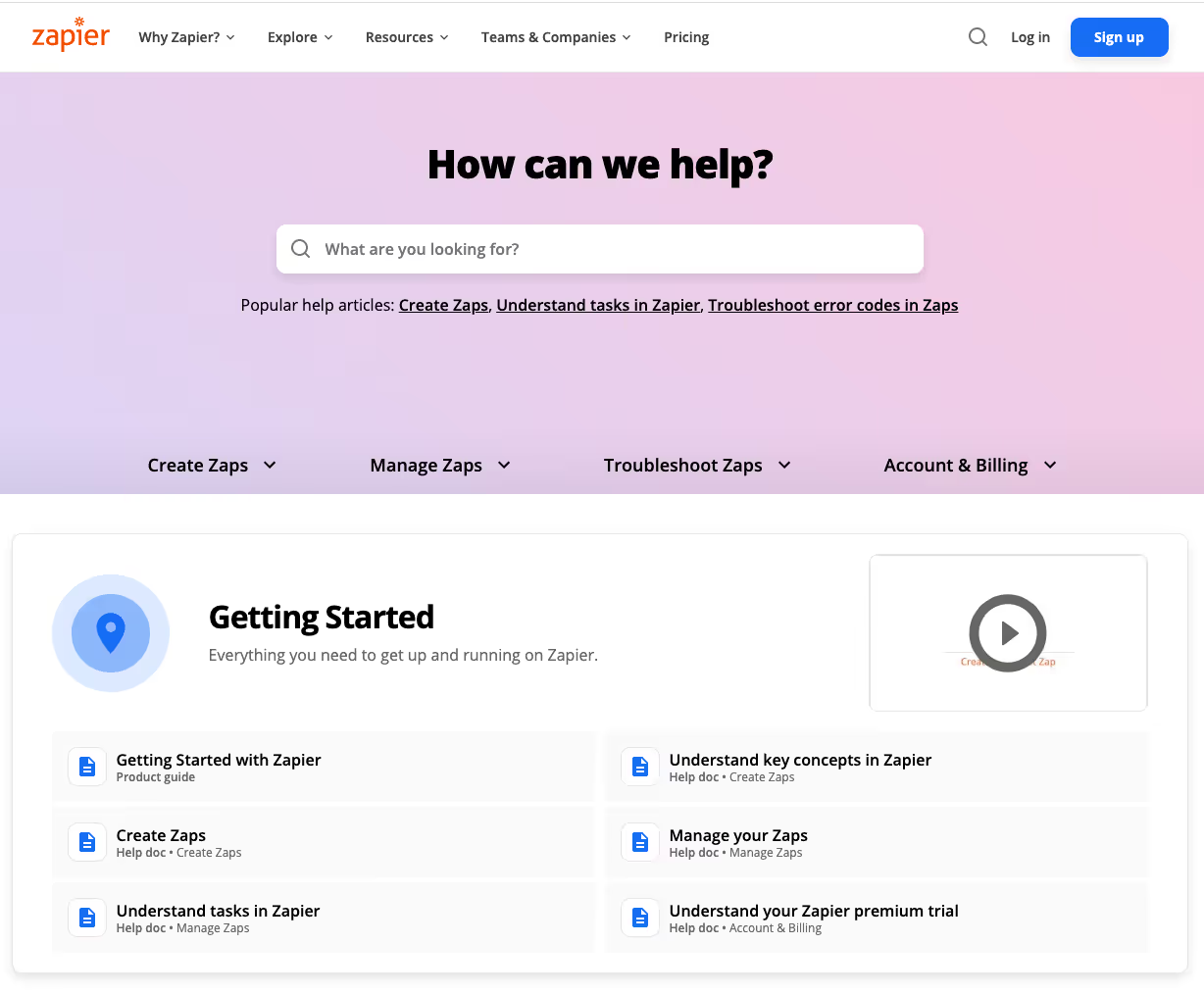As a SaaS startup, you may be running lean, but that doesn’t mean you can sacrifice on customer service. According to Understanding Customers author Ruby Newell-Legner, it takes 12 positive interactions to make up for just one bad customer service experience, so this isn’t a place to cut corners.
But how is it possible to provide quality support when you’re low on resources? Maybe you lack a dedicated customer service team at this stage in the game, or perhaps your support team isn’t large enough to handle customer demand as your business scales. When resources are scarce, self customer service could be your saving grace.What is self-service customer support?
Self customer service enables you to support your users without engaging a live service representative. The problem is that it can be maddeningly frustrating for users when they can’t reach a live person, so your self customer service resources need to be comprehensive enough to answer all of their questions. When done right, self customer service empowers users to find their own solutions, allowing them to get maximum value from your product with minimal effort.
Don’t think of self-service customer support as a stopgap measure. When you’re providing the right resources to users, self customer service can be preferable to live support — not just for your business, but for your users as well. Here’s how:
If you’re going to provide self customer service, it should be fast, easy, and low cost. Otherwise, what’s the point? That’s why we love no-code solutions for this sort of thing. Here are three of the easiest ways to help users help themselves.
1. Centralize resources in a knowledge portal.

Ninety percent of consumers expect to be able to find an online portal for customer service. Meet their needs by gathering all of your customer support resources in one place so they’re easy to find and easy to use. Your knowledge portal can consist of FAQs, how-to guides, troubleshooting tips, product tutorials, and more.
Tools like Candu offer templates for building your knowledge portal without a single line of code so that you can start helping users quickly.
2. Engage users in a community forum.

A community forum serves as a place for your users to ask questions, offer help to their peers, and generally geek out over your product. Essentially, you’re putting your customers to work, relying on the vast knowledge of power users to help those who are less experienced. While a community forum is certainly not a replacement for professional support, that peer-to-peer connection is a helpful complement to your site’s self customer service resources.
Though not as daunting as answering all customer questions yourself, you will need to keep an eye on your forum to make sure things don’t get too hairy (because internet trolls are real). Circle, Discord, and Tribe are all great tools for managing online communities, requiring little investment and even less code.
3. Mimic live interaction with a chatbot.

Tapping into your resources to answer common queries, chatbots humanize the self customer service experience with lifelike, back-and-forth conversations. Today’s intelligent chatbots can personalize their answers based on user segment, tailor their tones of voice, and even learn from their mistakes.
While AI has come a long way, chatbots won’t replace human interaction when a user has a particularly complex issue, but they will resolve a number of simple issues, leaving more time for your customer service team to tackle the tough stuff. Most importantly, chatbots are “on” 24/7, which means customers don’t have to wait for your offices to open to get support.
Checkout Drift, Intercom, and Landbot for easy-to-use options to start building your own chatbot.
You’ve put in the work to make support resources available; now make sure they’re accessible! Candu lets you build code-free, in-app customer self-service portals that direct users to all of that brilliant self customer service content.
Want to learn more? Get started with Candu for free.
